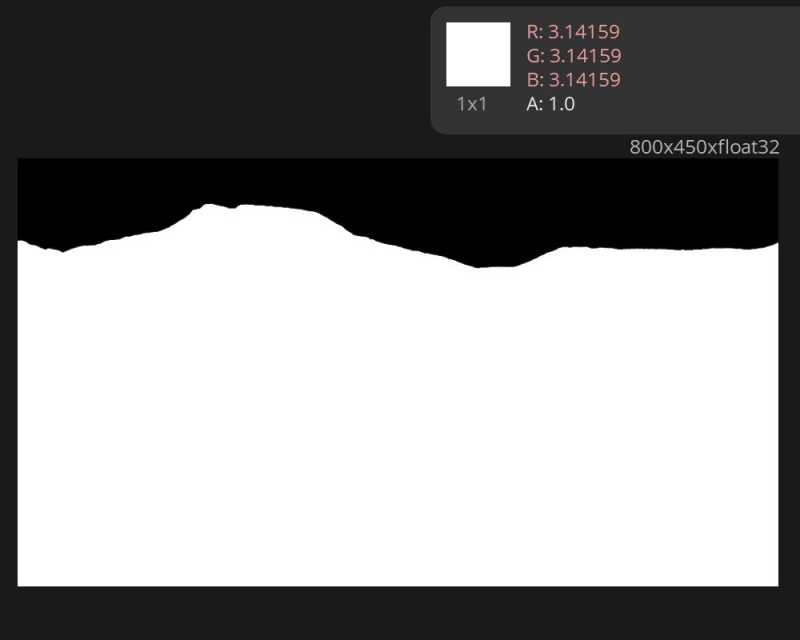PI Scalar
Overview[edit]
The Pi Scalar node outputs the value of 3.14159, or the approximate value of Pi.
In the example below, the Pi Scalar node is assigned to the luminosity input of the terrain’s Default shader. The rendered image is saved in the EXR format to preserve the floating point values of the terrain surface. When the pixels are sampled in a third party software, like Photoshop, AfterEffects, Nuke or Fusion, the RGB values of the pixels show up as 3.14159.
-
PiScalar_OnTerrain.jpg
Settings:
- Name: This setting allows you to apply a descriptive name to the node, which can be helpful when using multiple Pi Scalar nodes in a project.
- Enable: When checked, the node outputs a value of 3.14159, which is the approximate value of Pi. When unchecked, the Main Input value is passed through the node if there is one, otherwise a value of 0 is passed through.
A shader is a program or set of instructions used in 3D computer graphics to determine the final surface properties of an object or image. This can include arbitrarily complex descriptions of light absorption and diffusion, texture mapping, reflection and refraction, shadowing, surface displacement and post-processing effects. In Terragen 2 shaders are used to construct and modify almost every element of a scene.
A single object or device in the node network which generates or modifies data and may accept input data or create output data or both, depending on its function. Nodes usually have their own settings which control the data they create or how they modify data passing through them. Nodes are connected together in a network to perform work in a network-based user interface. In Terragen 2 nodes are connected together to describe a scene.

